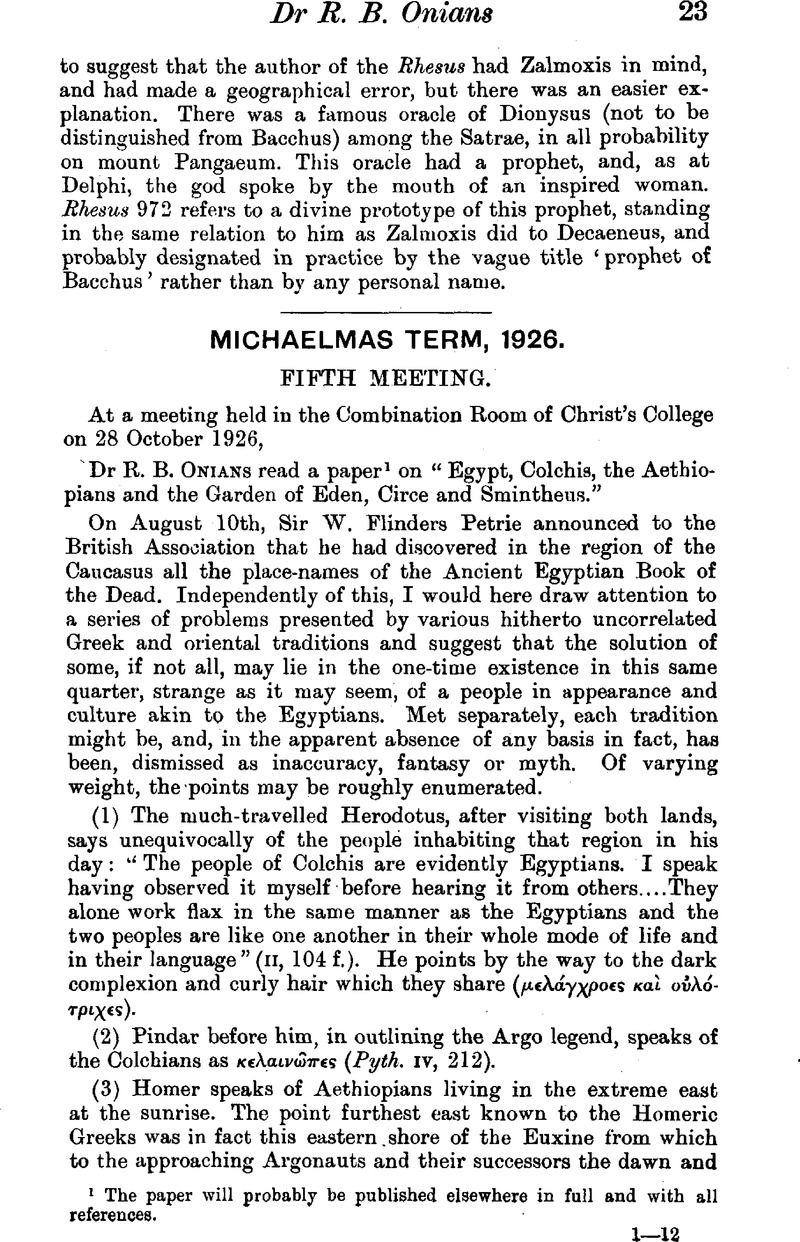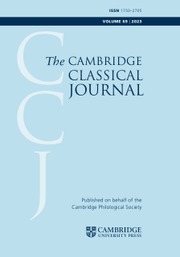No CrossRef data available.
Article contents
Fifth Meeting
Published online by Cambridge University Press: 02 April 2015
Abstract

- Type
- Michaelmas Term, 1926
- Information
- Copyright
- Copyright © The Author(s). Published online by Cambridge University Press 1927
References
page 23 note 1 The paper will probably be published elsewhere in full and with all references.
page 24 note 1 The exact position of this people is not known. After reviewing the later localisations from Herodotus onwards, Gutschmid concludes that all are merely conjecturing from Homer. For the Orphic Argonautica the Solymi are on the Euxine coast near Sinope.
page 25 note 1 Perhaps also in the name of Circe's daughter ΚασσιΦόνη. Κισσία may not have been applied to Memnon's mother till after his location at Susa, and chance coincidence is of course possible here as at other points in the above.
page 25 note 2 In applying the term to a people near the Indian Ocean Herodotus is careful to note that they differed in physical appearance and language from those of Africa.
page 26 note 1 So too A. J. Reinach and after him Picard, though seeing her relation to the Ephesian and Hittite goddess.
page 26 note 2 To the fact that Memnon was associated with hawks my attention was first drawn by Mr Gow in the discussion following the paper.
page 27 note 1 This conception may perhaps also explain the strange form of the cult image at Ephesus, and the many-breasted “eagle-lady” of Zakro (usually dismissed as fantasy) whose head in some of the sealings is not “aniconic ” or “perverted,” as currently described, but covered by a falcon's hood.
page 27 note 2 This translates the text as emended by Jensen and adopted by Langdon. It should be noted that the Ištar, who behaves thus, is placed in Elam, the home of the Αἰθίοπες=Κίσσιοι, and that her consort then appears to be Ninib, who was conceived as a hog. The Greeks, if they knew this setting, seem to have recognised it in Colchis.
page 28 note 1 The name would also be appropriate in its original sense to the goddess of the morning-star and dawn, cf. also p. 27, n. 2.


